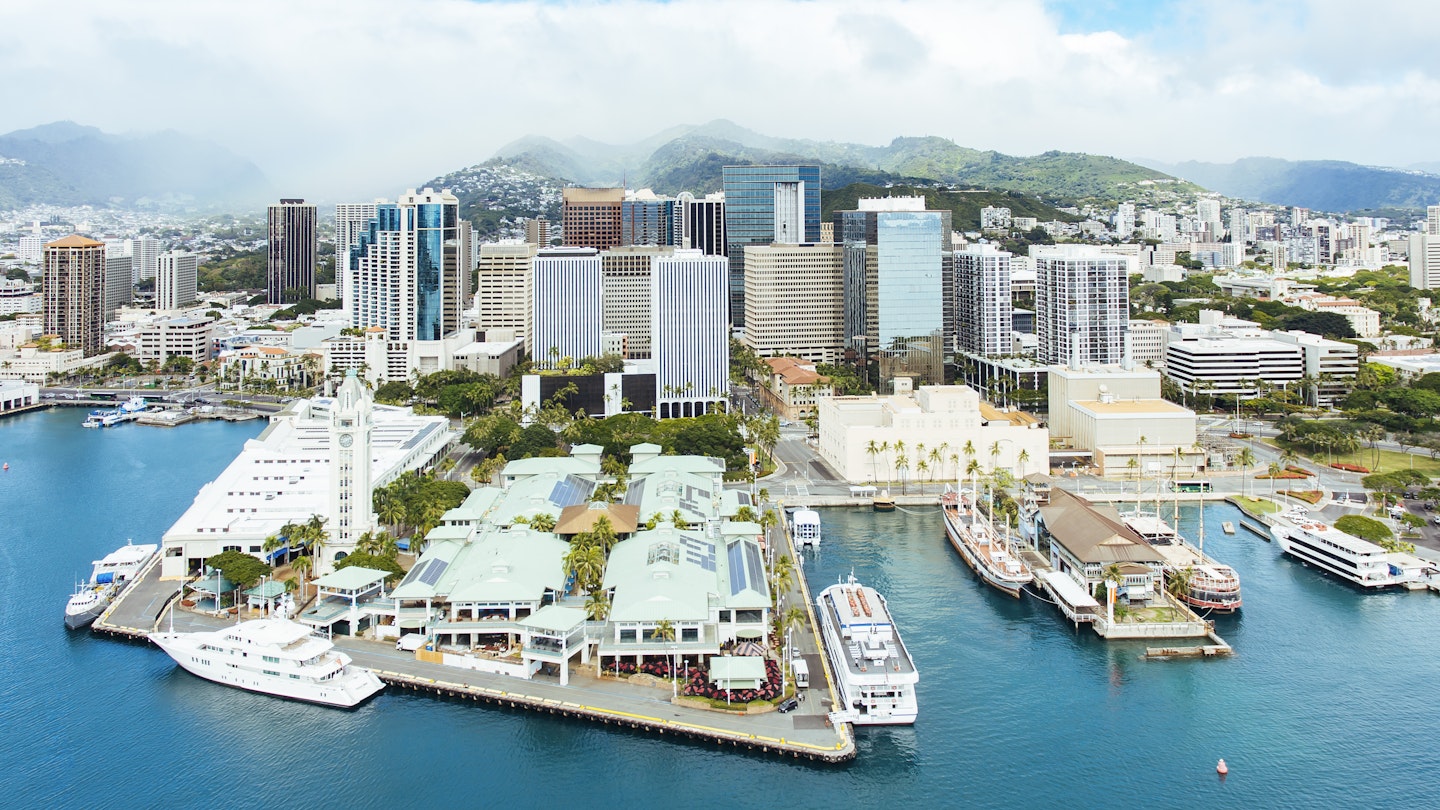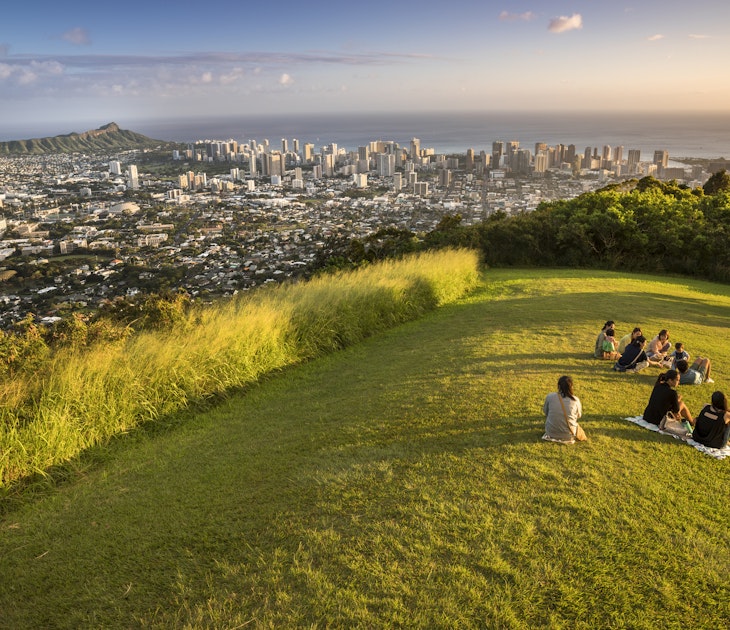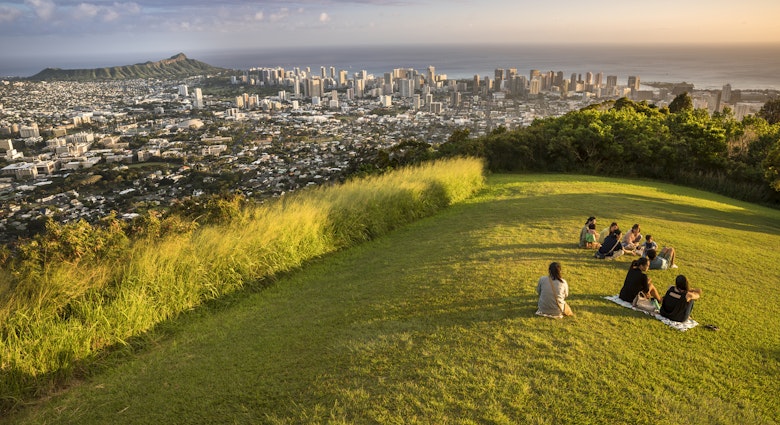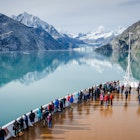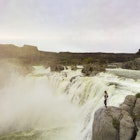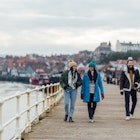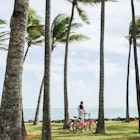Hawaii isn't exactly famous for its blue-light-special price tag, but you don't have to break your budget to enjoy everything the state capital has to offer.
Honolulu is full of low-cost things to do, from markets and museums to beaches and stunning scenic drives, not to mention plenty of sites that tell the story of Hawaii's long, complex history. Here are the best free things to do in Honolulu.
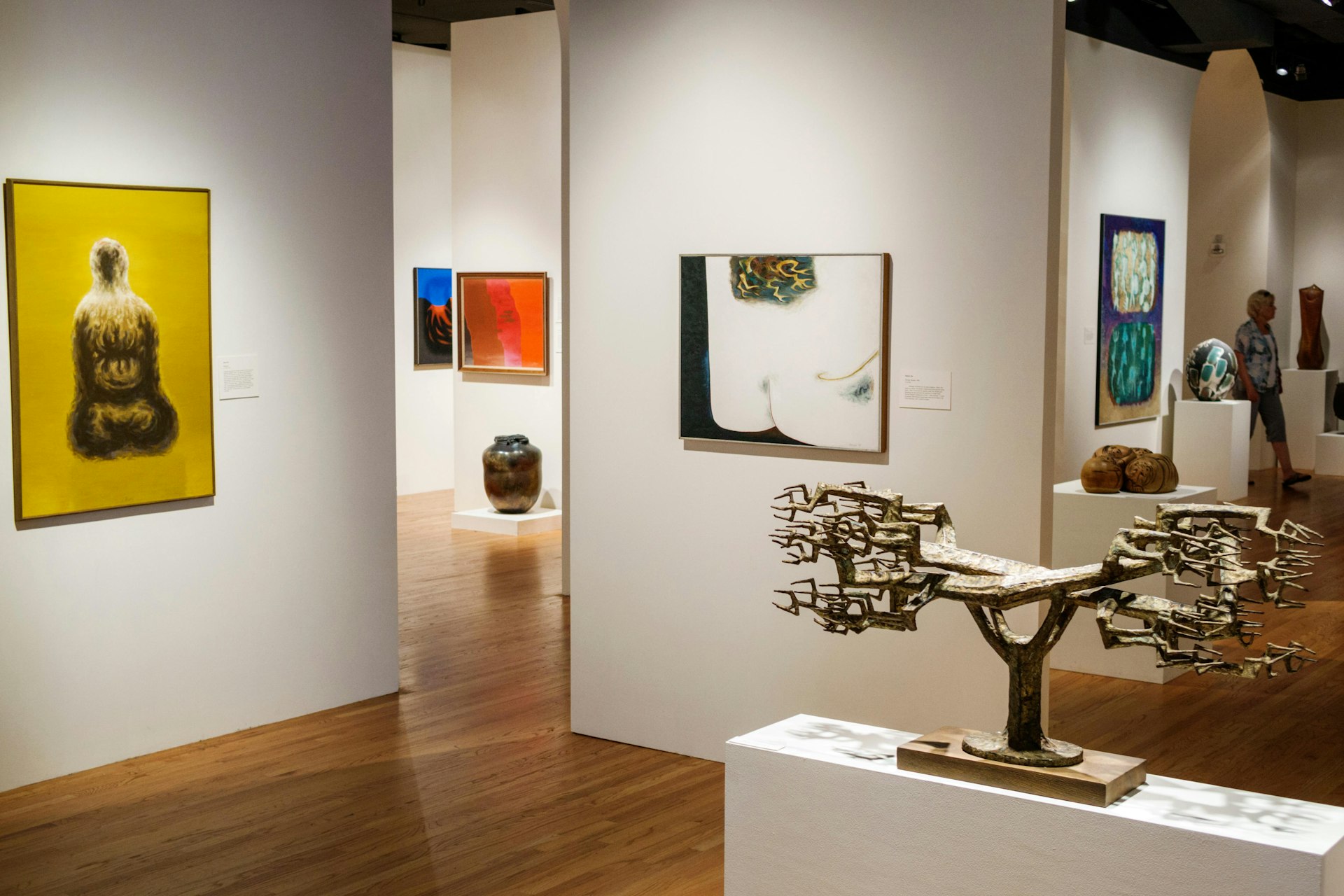
Hawai'i State Art Museum
With its thought-provoking collections, this public art museum showcases art dating back to the 1800s, and every piece has a connection to Hawaii. The museum inhabits a grand 1928 Spanish Mission Revival–style building, formerly a YMCA and today a nationally registered historic site.
Upstairs, revolving exhibits of paintings, sculptures, fiber art, photography and mixed media are displayed around themes, such as the island’s Polynesian heritage, modern social issues or the natural beauty of land and sea. Hawaii’s complex confluence of Asian, Pacific Rim and European cultures is evident throughout, shaping an aesthetic that captures the soul of the islands and the hearts of the people.
Special events are very worthwhile. On the first Friday evening each month, galleries are open with live entertainment and a family-friendly atmosphere. Drop by at noon on the last Tuesday of the month for free "Art Lunch" lectures or between 11am and 3pm on the second Saturday for hands-on Hawaiian arts and crafts, often designed with kids in mind.
Puʻu ʻUalakaʻa State Wayside Park
Puʻu ʻUalakaʻa State Wayside Park offers the best free view in Honolulu! At this hillside park, sweeping views extend from Diamond Head on the left, across Waikiki and downtown Honolulu, to the Waiʻanae Range on the right. The airport is visible on the coast and Pearl Harbor beyond that. The blue Pacific is a backdrop to everything. It's less than 2.5 miles up Round Top Dr from Makiki St to the park entrance. Signs detail the area's history as a macadamia nut farm.

Chinatown Markets
The commercial heart of Chinatown revolves around its markets and food shops. Noodle factories, pastry shops and produce stalls line the narrow sidewalks, always crowded with cart-pushing people and errand-running families. An institution since 1904, the Oʻahu Market sells everything a person cooking Chinese food needs: ginger root, fresh octopus, quail eggs, jasmine rice, slabs of tuna, long beans and salted jellyfish. You may even spot a pig’s head among the stalls.
At the start of the nearby pedestrian mall is the newer, but equally vibrant, Kekaulike Market. At the top end of the pedestrian mall is Maunakea Marketplace, with its popular food court.
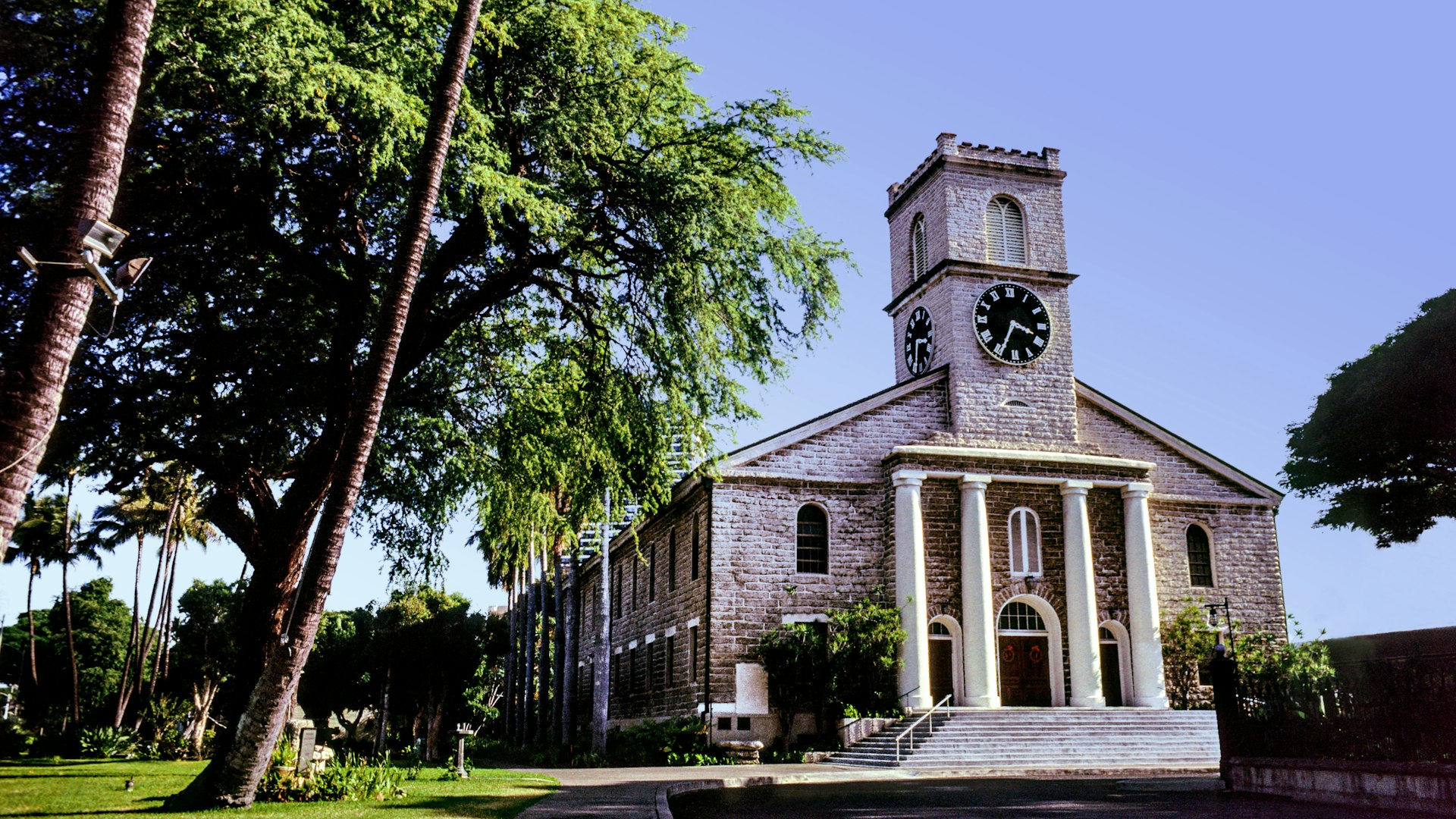
Kawaiahaʻo Church
Often regarded in the past as the "Westminster Abbey of Hawaii," Oʻahu’s oldest church was built on the site where the first missionaries constructed a grass thatch church shortly after their arrival in 1820. The original structure seated 300 Hawaiians on lauhala mats, woven from hala (screwpine) leaves. This 1842 New England Georgian (Palladian) style church is made of 14,000 coral slabs, which divers chiseled out of Oʻahu’s underwater reefs – a weighty task that took four years.
The clock was donated by Kamehameha III, and the old clock, installed in 1850, still keeps accurate time. The enclosed rear pews of the church, marked by kahilii (feathered staffs) and velvet padding, were for the aliʻi (Hawaiian royalty).
The tomb of King Lunalilo, the short-lived successor to Kamehameha V, is found at the main entrance to the Kawaiahaʻo Church grounds. Lunalilo died from tuberculosis on February 3, 1874, after a short reign of a year. Due to his popularity and status as Hawaii's first elected monarch, he became known as "The People's King." He was the first "elected monarch" because King Kamehameha V, the last of the Kamehameha kings, died in 1872 without naming a successor.
The cemetery to the rear of the church offers a who’s who of colonial history: early Protestant missionaries are buried alongside other important figures, including the infamous Sanford Dole, who became the first territorial governor of Hawaii after Queen Liliʻuokalani was overthrown.
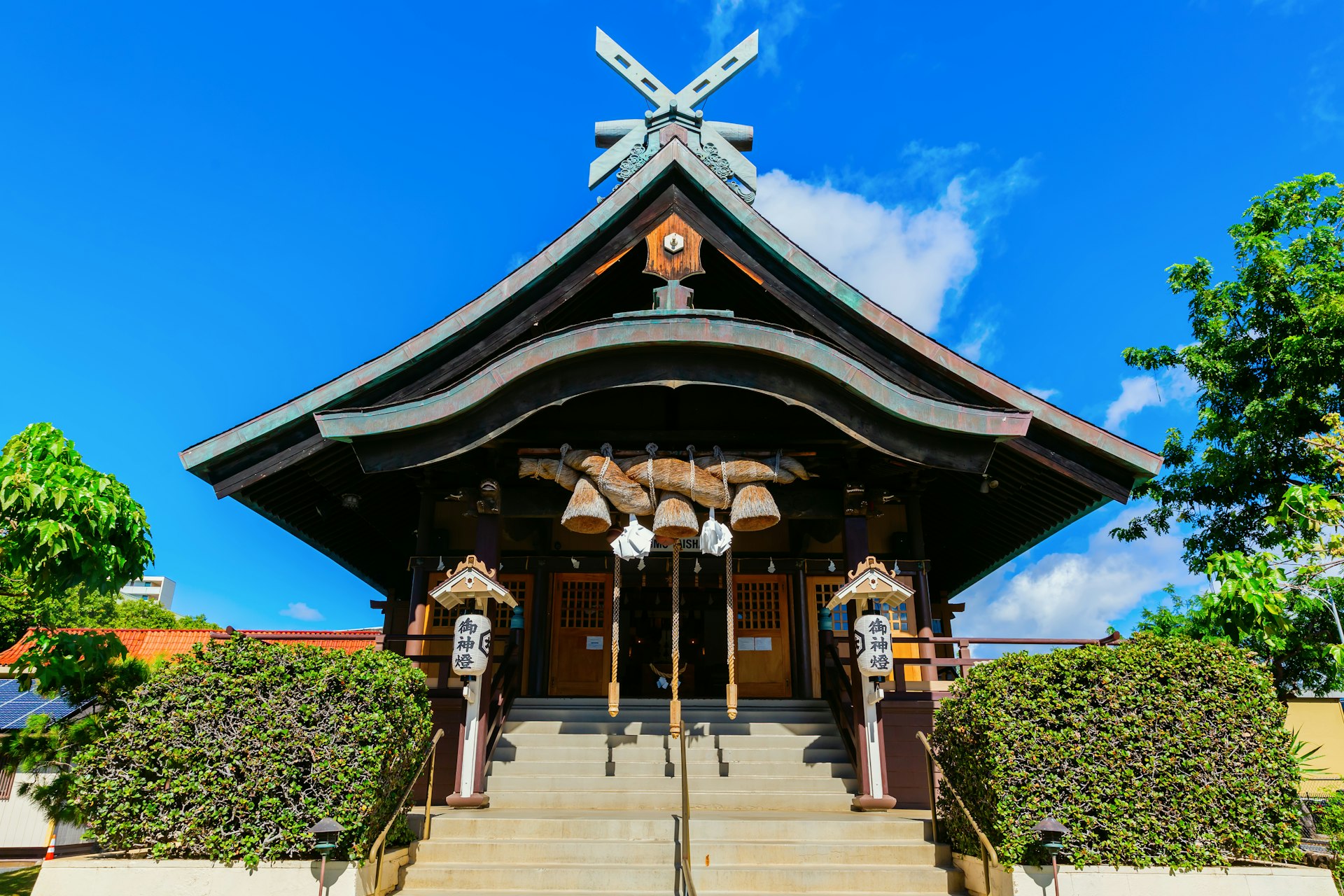
Izumo Taishakyo Mission
This Shintō shrine was built by Japanese immigrants in 1906. It was confiscated during WWII by the city and wasn’t returned to the community until the early 1960s. Cleaning your hands at the shrine entrance basin is considered an act of purification for those who come to pray. Thousands of good-luck amulets are sold at their office, especially on January 1 to 3 when the shrine heaves with people who come seeking New Year’s blessings.
Honolulu Museum of Art
First Hawaiian Bank’s high-rise headquarters on Bishop St is home to the downtown gallery of the Honolulu Museum of Art, featuring fascinating mixed-media exhibits of modern and contemporary works by Hawaii artists. Exhibits cover several floors and the building itself features a four-story-high art-glass wall incorporating 185 prisms.

Aloha Tower
Built in 1926, the 10-story Aloha Tower was a landmark and once the city’s tallest building. In the golden days when all tourists to Hawaii arrived by ship, this pre-WWII waterfront icon – with its four-sided clock tower inscribed with "Aloha" – greeted every visitor. These days, Hawaii Pacific University occupies the mostly defunct Aloha Tower Marketplace, which was meant to ensnare people arriving at the nearby cruise ship docks. Take the elevator to the top-floor observation deck free of charge for fabulous 360-degree views of Honolulu and the waterfront.
Manoa Chinese Cemetery
The Lin Yee Chung Manoa Chinese Cemetery is on a knoll nestled on the eastern slopes of the Manoa Valley. Founded in 1852, with all the design elements of a classic Chinese cemetery, it is the oldest and largest Chinese cemetery on the Hawaiian Islands. Stroll among the gates and gravesites for a look into local history and enjoy the views out of the valley mouth to the tall buildings of Waikiki.
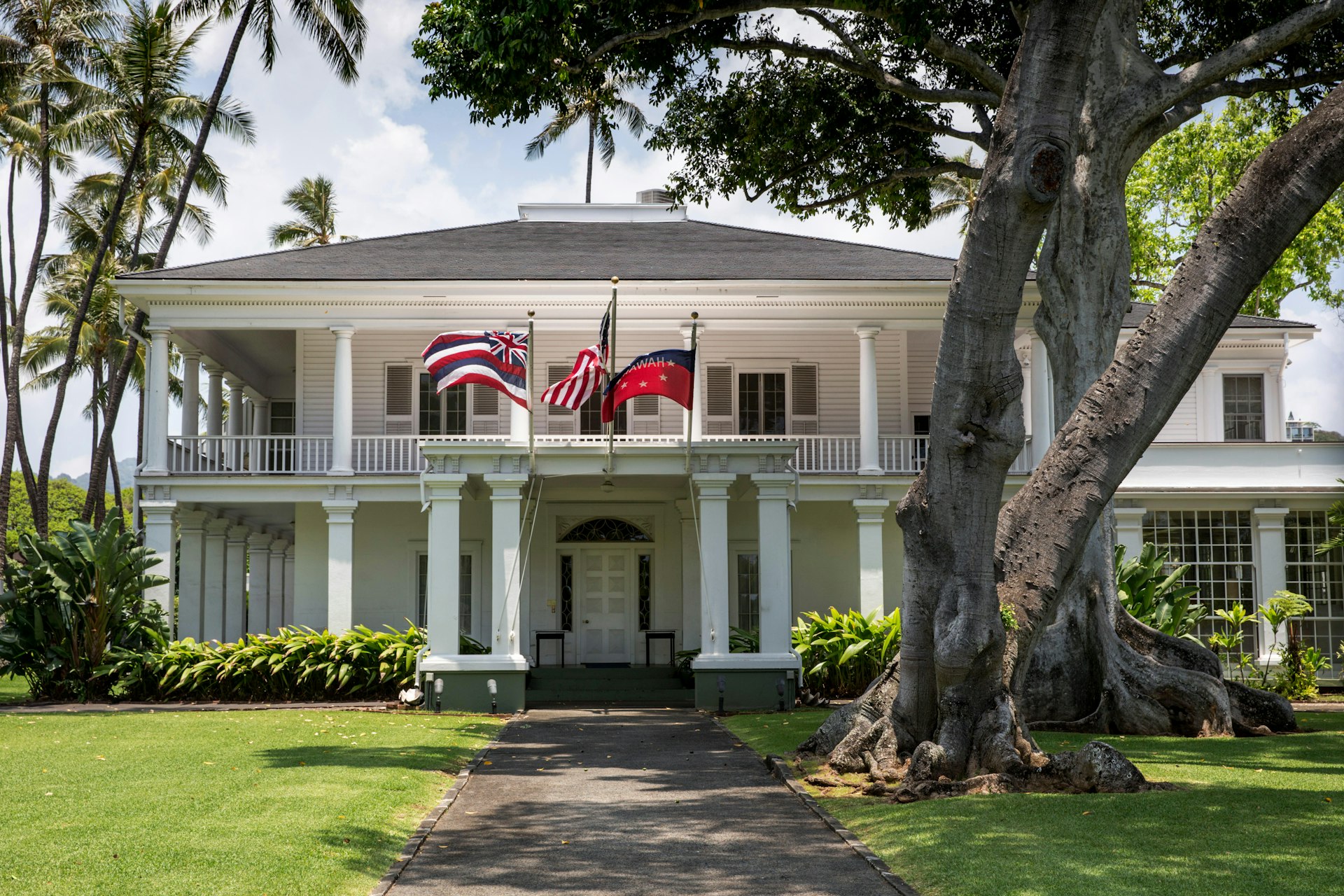
Washington Place
Formerly the governor’s residence, the colonial-style Washington Place was built in 1846 by US sea captain John Dominis. The captain’s son became the governor of Oʻahu and married the Hawaiian princess who later became Queen Liliʻuokalani. After the queen was released from house arrest inside ʻIolani Palace in 1896, she lived here until her death in 1917. The building is still used for official events. Free tours take place every Thursday, but you must register in advance.
Hawaii State Capitol
Built in the architecturally interesting 1960s, Hawaii’s state capitol is a poster child of conceptual postmodernism: two cone-shaped legislative chambers have sloping walls to represent volcanoes; the supporting columns shaped like coconut palms symbolize the archipelago's eight main islands; and a large encircling pool represents the Pacific Ocean surrounding Hawaii. The building is closed to the public, but visitors can walk through the open-air rotunda and peer through viewing windows into the legislative chambers. Learn more about it with a self-guided tour brochure.

National Memorial Cemetery of the Pacific
Northeast of downtown Honolulu is a bowl-shaped crater, nicknamed the Punchbowl, formed by a long-extinct volcano. Hawaiians called the crater Puowaina ("hill of human sacrifices"). It’s believed that at an ancient heiau (temple) here, the slain bodies of kapu (taboo) breakers were ceremonially cremated upon an altar. Today, the remains of ancient Hawaiians sacrificed to appease the gods share the crater floor with the bodies of well over 50,000 soldiers.
The remains of Ernie Pyle, the distinguished war correspondent who was killed in Okinawa during the final days of WWII, lie in section D, grave 109. Five stones to the left, at grave D-1, is the marker for Ellison Onizuka, the Hawaiʻi (Big Island) astronaut who perished in the 1986 Challenger space shuttle disaster. Other notables buried here include longtime US senator and WWII vet Daniel K Inouye. Screens at the visitors center at the cemetery entrance let you look up the location of any gravesite.
Even without the war sights, Punchbowl is worth the drive up for the plum views of the city and Diamond Head. After entering the cemetery, bear left and go to the top of the hill, where there’s a sweeping ocean-view lookout. Special events held at the cemetery include Memorial Day ceremonies to honor veterans and a traditional Easter sunrise Christian service.
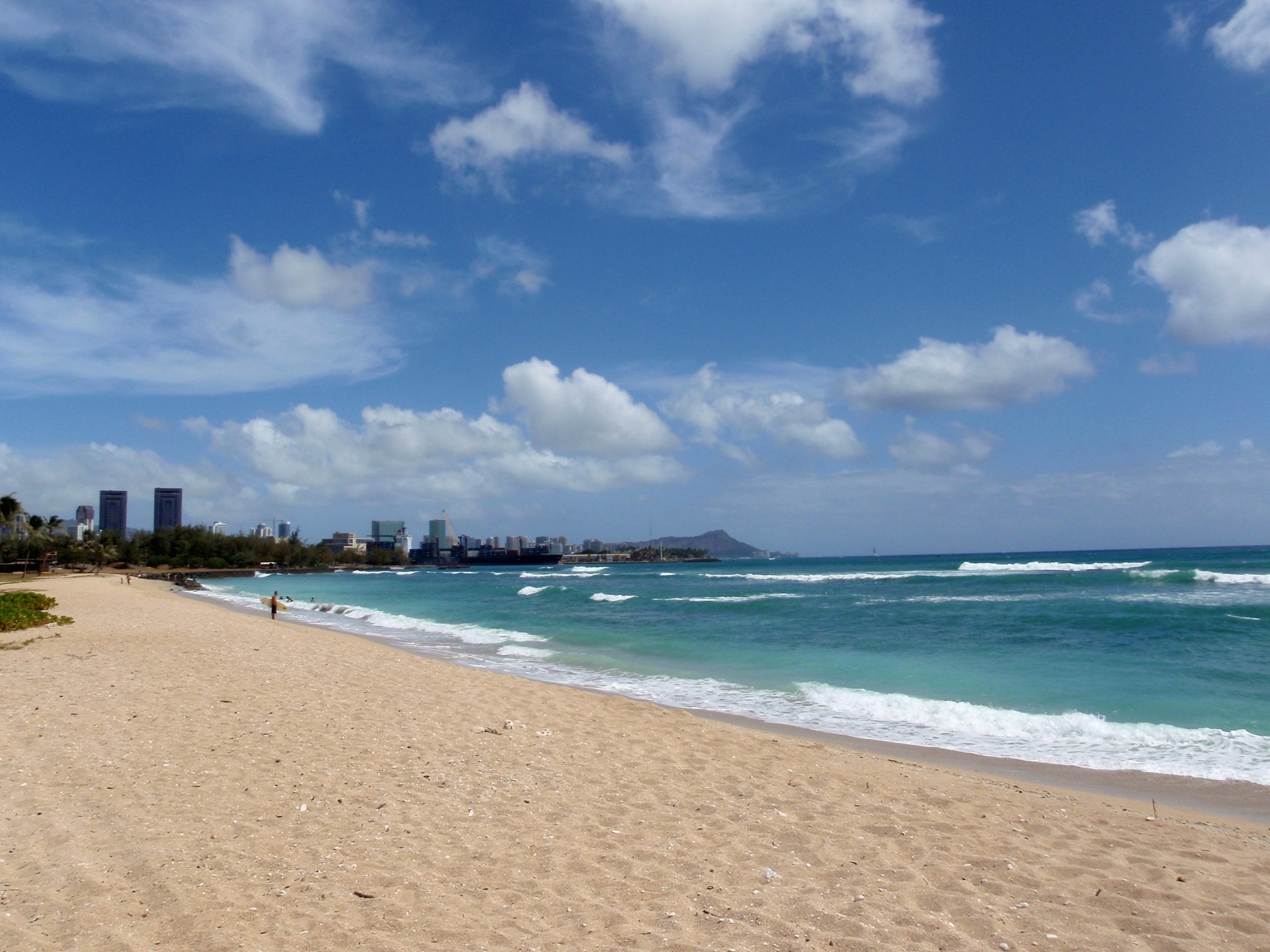
Sand Island State Recreation Area
A barely visited half-mile ribbon of sand hides in plain sight from much of Honolulu. Industrial Sand Island, sitting between the airport and the port, is home to this large urban park. The beach faces the open Pacific and has fine-grained sand. It's backed by vast lawns dotted with trees and public facilities.
From the sand there are fine views of planes taking off (wave to the morose faces overhead winging their way home) and of the high-rises of downtown and Waikiki. On the downside, the park suffers from shabby maintenance and there's a few people wandering about who clearly have no place else to go. It's also a bit of a trek to reach the beach. From the intersection where the Sand Island Access Rd heads southwest from the Nimitz Hwy (Hwy 92), it's about a 4-mile drive, as you have to drive all the way to the east end of the island before hooking back to the beach.
Kuan Yin Temple
With its green ceramic-tile roof and bright red columns, this ornate Chinese Buddhist temple is Honolulu’s oldest. The richly carved interior is filled with the sweet, pervasive smell of burning incense. The temple is dedicated to Kuan Yin, bodhisattva of mercy, whose statue is the largest in the interior prayer hall. Devotees burn paper "money" for prosperity and good luck, while offerings of fresh flowers and fruit are placed at the altar.
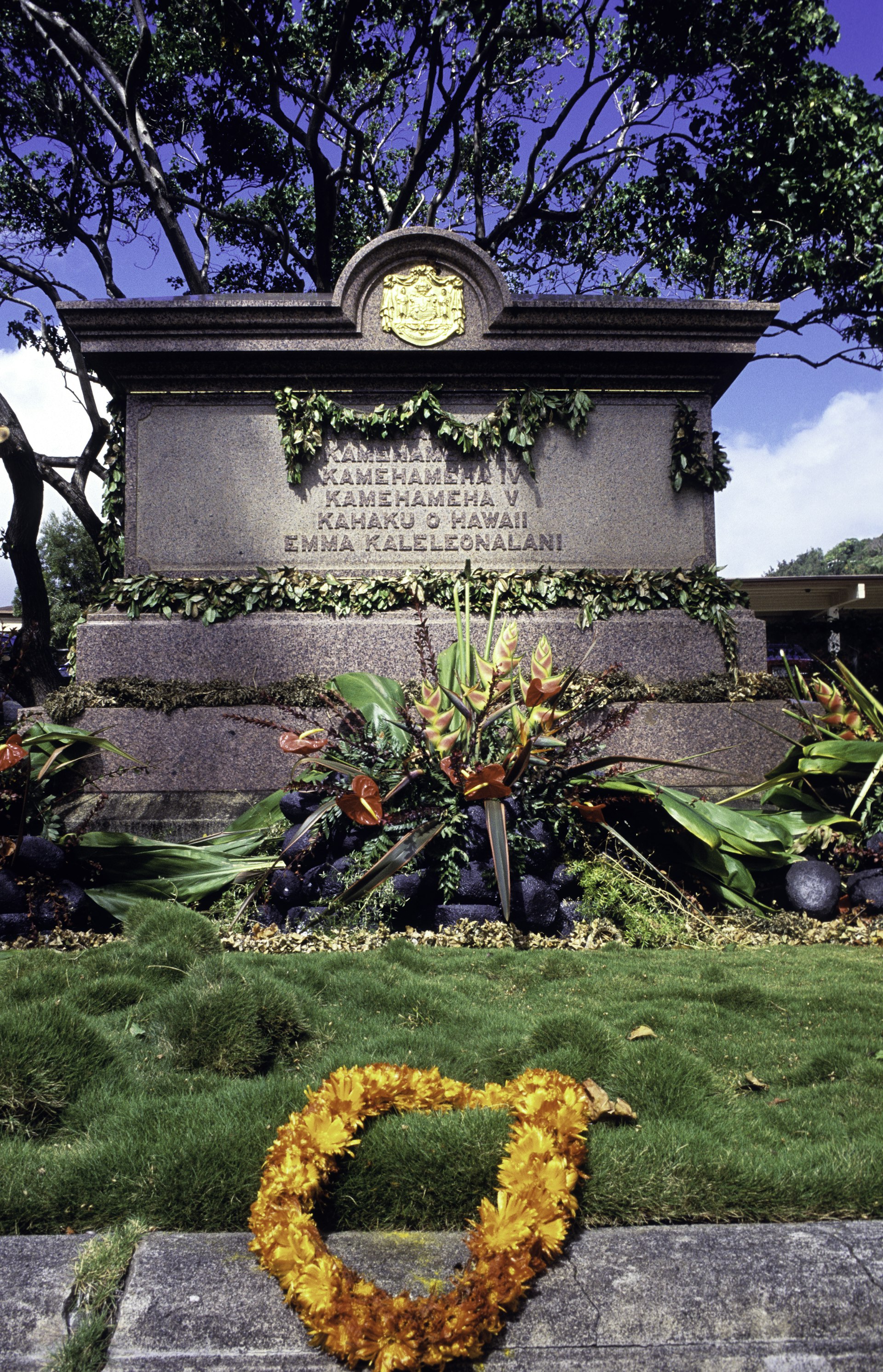
Royal Mausoleum State Monument
Known as Mauna ʻAla, or Fragrant Hills, in Hawaiian, this is the final resting place of Hawaii's two prominent royal families, the Kamehamehas and the Kalakauas. Completed in 1865 for Prince Albert, it's adjacent to the public Oʻahu Cemetery. The mausoleum is home to the remains of almost all of Hawaii's monarchs, their consorts, and various princes and princesses. There is no entrance fee to this sacred place to all Hawaiians, where the manicured grounds are peaceful and the Gothic Revival chapel is on the National Register of Historic Places.
John Young Museum of Art
A short walk downhill from the UH Campus Center, the John Young Museum of Art features 20th-century Hawaii painter John Young’s collection of artifacts from the Pacific islands, Africa, Asia and Mesoamerica, mostly ceramics, pottery and sculpture. The museum has a lovely outdoor courtyard and hosts excellent special exhibitions – often with Hawaii themes. The Art Gallery, in the nearby art building, is also free to visit, and also hosts excellent contemporary exhibitions in a 4000-sq-ft brutalist octagonal exhibition space surrounded by bamboo.
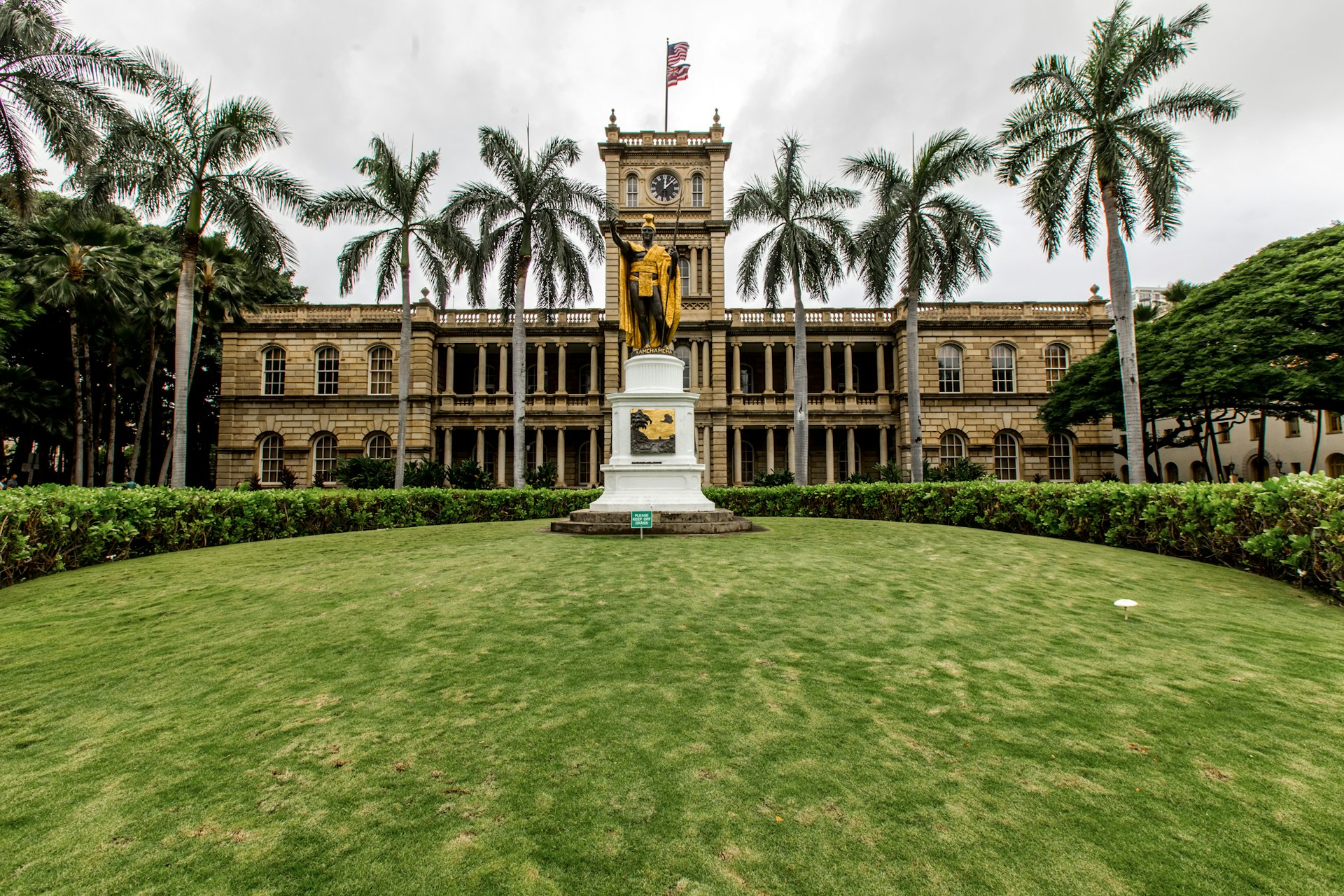
Aliʻiolani Hale
The first major government building ordered by the Hawaiian monarchy in 1874, the "House of Heavenly Kings" was designed by Australian architect Thomas Rowe to be a royal palace, although it was never used as such. Don't miss the King Kamehameha V Judiciary History Center to see short films and exhibits about the reign of Kamehameha I, the rule of law under the Hawaiian Monarchy, and martial law in Hawaii during WWII. The center is free to visit, and is a great place to learn about Hawaii’s judicial process and legal history during ke au ʻōiwi wale (the native-only period) through kēia manawa (present day).
Editor's note: Due to COVID-19, the Hawaii State Judiciary has announced restricted access to Aliʻiolani Hale until further notice. Access to the building is restricted to individuals with official business with the courts.
Hiroshima to Honolulu Friendship Torii
In a grassy median called the Mōʻiliʻili Triangle Park sits a symbol of Honolulu's close ties to Japan. This bright red Shintō gate is a half-size replica of a famous torii (traditional gate) at the water’s edge of Miyajima Island, just south of Hiroshima. Few know that Honolulu and Hiroshima are sister cities, even fewer know that the two cities' ties go back to the 19th century – when the first wave of Japanese immigrants were drawn from the Hiroshima region.

Tantalus-Round Top Scenic Drive
Starting 2 miles above downtown Honolulu, a narrow switchback road cuts its way up into the Makiki Valley's forest reserves and climbs almost to the top of Mt. Tantalus (2013ft), aka Puʻu ʻOhiʻa. There is a a profusion of tropical plants along the way, as vines climb to the tops of telephone poles and twist their way across the wires. This 8.5-mile circuit is a two-way loop called Tantalus Drive on its western side, Round Top Drive to the east.
Keliiponi Hale
The Keliiponi Hale was erected in front of ʻlolani Palace in 1883 as a pavilion for the coronation of King Kalakaua. As there was no other ranking person to perform the duty, Kalakaua placed the crown on his own head. The pavilion was later moved to its present site and used as a bandstand. These days, the Royal Hawaiian Band plays free concerts near the pavilion at noon on most Fridays. However, during COVID, their schedule has been altered. Check their website for updates.
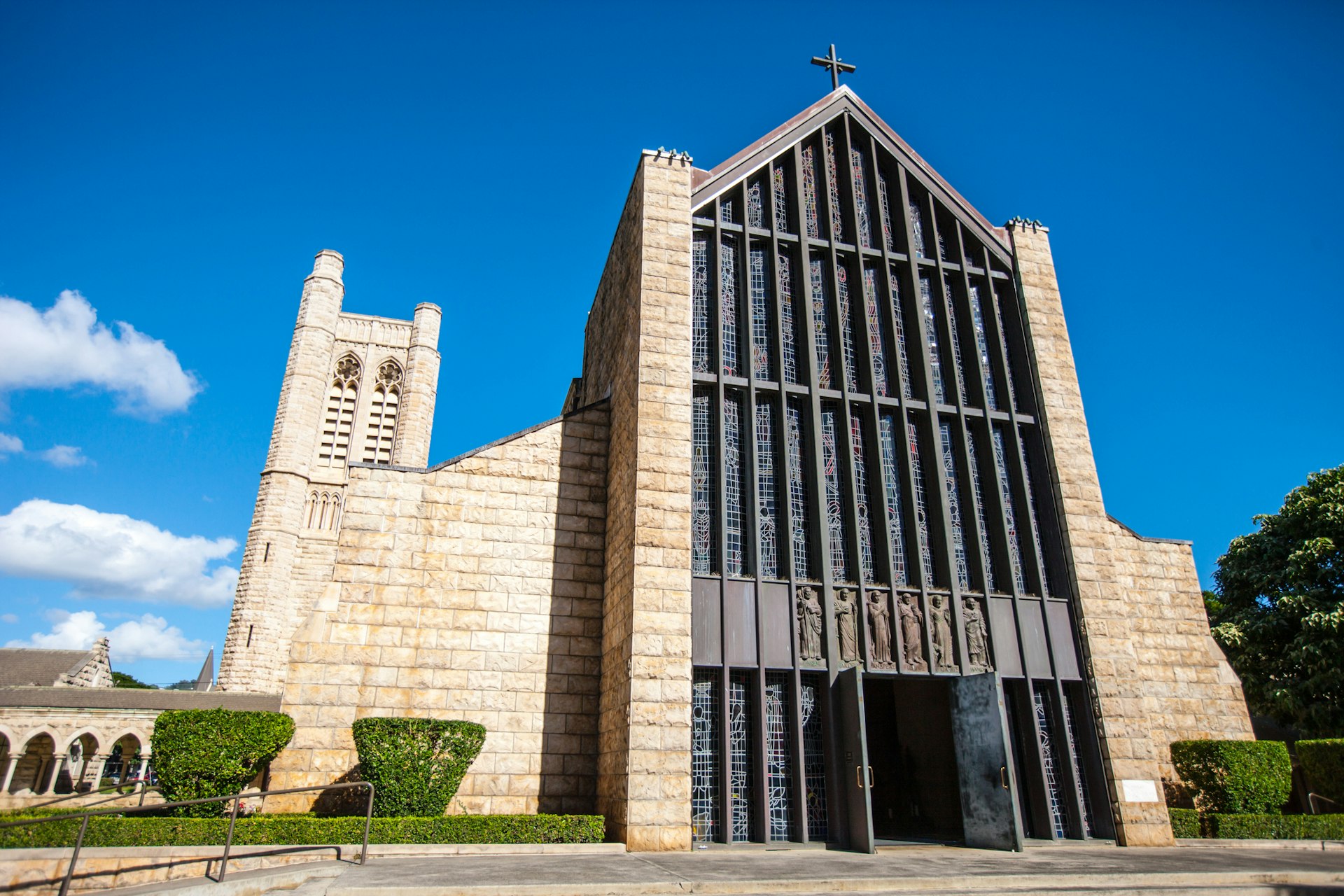
Cathedral of St. Andrew
King Kamehameha IV, attracted to the royal Church of England, decided to build his own cathedral and founded the Anglican Church in Hawaii in 1861. The cathedral’s cornerstone was laid in 1867, four years after his death on St Andrew’s Day – hence the building's name. The architecture is French Gothic, using stone and stained glass shipped from England.
You may also like:
The best time to visit Honolulu
17 best places to visit in Hawaii
How to choose the best Hawaiian island for your trip
This article was originally published on April 2, 2021.
